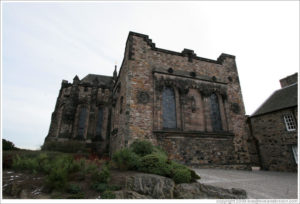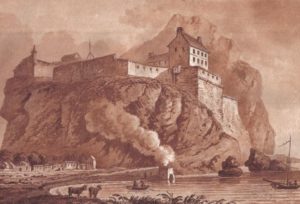BOOK THREE - THE GILDED CROWN
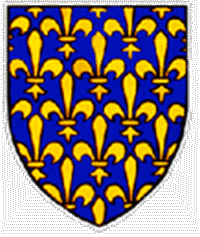 France
France
Arras - The Tourney
| Resplendent in his armorial surcotte, Gillet de Bellegarde stood upon the tourney field at Arras and folded his arms. His weight rested nonchalantly on one leg, his manner cool and confident as he laughed with this friend, Gabriel de Beaumont de l’Oise. Tethered beside them, swathed in a matching azure fringed caparison, blazoned with a large silver bell, was Gillet’s horse, Inferno. Admiring glances were directed in abundance at the two knights and when Armand-Amanieu d’Albret joined them—his blood-red tunic conspicuous for the lack of heraldic device—one may have thought the sons of Narcissus had gathered for a briefing before being let loose on a village of virgins. |
Gisors
| Gisor Castle and its defense system |
| Gillet de Bellegarde reined in his horse and gazed up at the castle of Gisors. The fortress stood atop a motte and was encircled by a mantlet wall of stone. In the past it belonged to the Dukes of Normandy and had played many a role as a frontier castle until it fell into the hands of the Crown. Gillet stared at the octagonal keep and slowly made the sign of the cross against his body. It had also been the prison for Jacques de Molay, Grand Master of the Knights Templar, the unfortunate soul burned at the stake as a heretic. |
Vernon
| The boundary between the Vexin, the last direct stronghold of Paris, and the Duchy of Normandy was the river Epte, which flowed into the Seine just near Vernon. The area was renowned for the Kings of England and France to parley or sign treaties, but for Cécile and her party, the ancient town was just another rest-stop on what would be a long journey. (Above) The River Ept in Vernon |
|
Castle Vernon
Finally the river Epte came into view and with it, the bridge that would take them into the town. All breathed deep sighs of relief as their horses clip-clopped over the stonework, their elongated shadows changing form like shape-shifters in the early evening light. Once more Armand turned and studied the landscape behind him.
Cécile followed his example. ‘What is it? Looking for trolls hiding under the bridge?’
*** ***
The castle of Vernon closed its doors to all, fearing the plague more than the wrath of the Vicomtesse. |
| Reynaud unrolled simple drawings of the tunnels concealed beneath the Hôtel-Dieu, which housed the sick. He had once been called to fix a broken grate which led to the ancient Roman sewer channels but what he discovered was a complex system of tunnels lay beneath the hostel. From memory he’d sketched the layout. (Above) - Actual Roman tunnels running beneath buildings in Vernon (actual location). |
Le Goulet (hamlet)
| Gabriel, Margot, Minette and Jean Petit had settled to their existence in Le Goulet in a tiny abandoned cottage with the permission of the hamlet’s council. The house belonged to the son of a thatcher but after his father’s death, the young man had bolted to Paris with dreams of finding greatness at court and left the dwelling to rot. Gabriel offered his services to the hamlet’s governing board by way of payment for his keep and that of his “two sisters” during their temporary stay. He had not mentioned the baby. Some days Gabriel collected rents for the council, other days he dug latrine trenches. He was also given license to hunt in the nearby forest and, for a fee, could sell the meat and fur to pay for their food. (Above) - Farm house in Goulet. |
 |
| A procession entered the church headed by the priest garbed in a black robe and swinging his thurible. Trailing him was the lead acolyte, carrying a huge gold cross, and behind him, holding lit beeswax candles and softly singing, followed several choirboys. Cécile moved from in front of the dais to next to Armand and Gabriel. She bent her head solemnly for the requiem mass. It was time to say her last goodbye to her friend. (Above) - Medieval church in Goulet. |
Bordeaux
 |
| Above - St Andre's cathedral - Bordeaux
The crowd gathered for the Mass, piling into the cathedral of St André, its western side situated hard up against the city wall. One man halted in his steps to stare up at the magnificent rose window, reputedly the most beautiful in France. Unimpressed, his attention was easily diverted to a young lad pulling at his doublet. The child held out a grubby hand. ‘Alms for the poor on Corpus Crispy,’ he lisped.
‘Out of my way!’ Salisbury pushed the youth aside and marched under the sculptured portal to enter the cathedral. He wanted to be near the front. For some reason the sermon on the holy Eucharist always thrilled him. Maybe it was hearing about the body and the blood of Christ or today perhaps it was the anticipation of the boy awaiting him in his room. The Earl’s hairy brows arched. Perhaps he should have given closer inspection to the beggar child outside. Peasant children were always expendable and a threesome would not have been unwelcome. Salisbury almost hardened in God’s sanctuary.
|
 |
 |
|
Above - Blanquefort Castle today
One week after their arrival in Bordeaux, Cécile stood at the base of the steps leading into Blanquefort castle. She inhaled a deep breath to steady herself. Her heart beat rapidly, both with the excitement of finally seeing Gillet and with trepidation for his reaction to her unexpected appearance. The page boy stood at the entrance and glared at the unescorted woman. His foot began to tap. He was waiting to take her name to the Master of Ceremony. |
Castle de Saint Loup
| The group had fled from Bordeaux to the small village of Saint Loup on the river Thouet, the castle the most northern defence point in a series of military constructions known as the Dive. It was here, at the keep in Saint Loup, that King Jean le Bon had been brought after his capture at Poitiers, the same bastion now offering them sanctuary. |
|
Above - Castle de Saint Loup - today known as 'Chateau de St Loup' and the square keep is where Jean le Bon, King of France, was taken after his capture at Poitiers.
|
|
Cécile leaned against the short stone wall edging the pea-green moat and watched as Minette and Griffith walked to the tower. The gardens were laden with mid-summer blooms and the heady scent after the rain was intoxicating. Cécile breathed deeply of the perfumed air with satisfaction.
Gillet’s hands slid around her waist and he squeezed. ‘What say you, wife, to finding a dark corner in this paradise?’ he whispered into her ear.
|
 |
| Above - Castle de St Loup - today known as 'Chateau de St Loup' |
|
Gillet and Cécile sat on a garden bench, sipping mead and watching Gabriel play stick-ball with Humphrey de Bohan’s chamber boy. It was the cool of evening and the breeze whipped up a mixed scent of floral perfume and stagnant moat water. Just as contradictory was the temperature of the gusts, a lazy warm flow blasted now and again with a burst of icy air.
‘Storm’s coming.’ Gillet tipped his head back and surveyed the horizon. A low grumble sounded as a pageant of whirling leaves paraded past. The sound of laughter came to them from across the lawn where Gabriel wrestled the lad to the ground and tickled him mercilessly. The squeals were a welcome distraction and made Cécile smile. ‘Has he spoken yet?’
‘No, not yet,’ replied Gillet. ‘But I do not think it will be long before he is talking again.’ |
The Dive
 |
The Landscape of The Dive (pronuounced Deeve)
(All photos taken from a 2006 research trip)
The Dive was a protective row of fortifications built to keep the English out and they held a commanding view over the plains between Brittany and Paris. It consisted of many keeps and towers, some of the remaining fortifications as seen below - Saint loup, Germond, Curcay-sur-Dive, Ranton Castle and Moncontour.
|
| Above - Germond and the surrounding countryside under constant watch for attack. Ranton Castle Gatehouse. |
| Above - Saint Loup, Ranton Castle, Ranton Castle main entrance and the main keep. |
| Gillet paused to gaze out over ‘The Dive,’ a stretch of land from Poitiers to Loudon protected by a row of fortifications; St Loup, Moncontour, Germond, Curçay-sur-Dive and Ranton castle—the last line of defence between Brittany and Paris. |
| Moncontour boasted a square Norman-style fortress that once belonged to King John of England, now firmly back in French hands. The limestone keep stood on a hill, providing an excellent view some seven leagues over the Dive’s valley and wide plain.
With impassable marshes lying close to the castle, the high stone walls bore a vaulted entrance.
Gillet looked over the land and, for the first time in a long while, he felt safe. |
Bellegarde & the Loire Valley
| Above - The Loire Valley and Bellegarde (2006). |
| They tracked to Orléans and finally, Bellegarde, arriving mid-afternoon towards the second week in August. Cécile reined in beside Gillet as they emerged from the Loire forest. Over the flatter landscape, they could see the rose-coloured stone of the turrets on the keep and the tiles on the new stables twinkled in the sunlight. |
They were home at last - Bellegarde.
 Scotland
Scotland
Craigmillar Manor House
| Above - 18th century painting of Craigmillar House and Craigmillar today. |
| Craigmillar manor house was imposing, sitting atop a low hill overlooking the southern township of Edinburgh. The new wing, well under construction, was placed strategically adjacent to the original building which had been a monastic house. Catherine was surprised by the number of men working on the inner ward that would connect the two structures. |
Edinburgh Castle
Saint Margaret's Chapel, Edinburgh Castle
| As they climbed higher, the air grew sweeter. Catherine caught glimpses of the estuary, the Firth of the Forth. The castle itself was atop an enormous rock pipe, the remainder of an extinct volcano, making it almost impenetrable. |
|
‘Saint Margaret’s Chapel, built by her son, the first King David of Scotland,’ Lady Dunbar explained as she pushed open the heavy door. ‘Shall we look inside?’
Catherine shivered; the air within was far cooler than the breeze outside.
‘I often sit within these walls when I wish to be alone. I find Edinburgh Castle to be a very noisy place, with soldiers coming and going at all hours o’ the day and night.’
|
Dumbarton Castle
| ‘Gods bones! It’s as impenetrable as a fifty-year-old virgin and just as unappealing.’ Roderick swilled the remainder of his goblet then wiped his mouth on his sleeve. ‘Took me all the first day just to glean the name of the steward!’
‘And was he obliging?’
‘He was, brother.’ Roderick pushed the bench seat with his foot and sat with his back to the fire. ‘I convinced him I was kin to the Wallace, and the coin spent on wine was not to waste for it certainly loosened his tongue.’
|
 |
|
Dumbarton Rock rose before them, visible across the lowlands as far as the Kilpatrick Hills, dominating the skyline. Roderick rode ahead, the carriage bumping along the track some distance behind him.
‘What are your plans once we arrive?’ Agnes asked Simon as she steadied herself on the bench seat.
‘I am relying on you, Lady Dunbar, to gain us entry.’
‘I see. Perhaps I should spend some time constructing a decent lie!’
Simon looked back over his shoulder and caught Catherine’s grimace. ‘Do what you must.’
|
Go to
 France
France


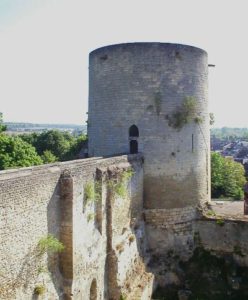








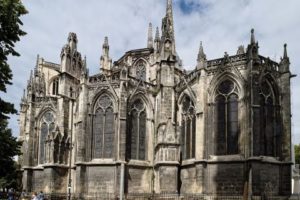









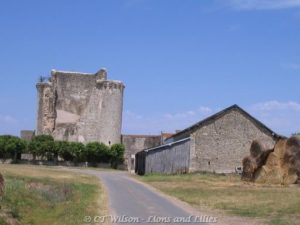


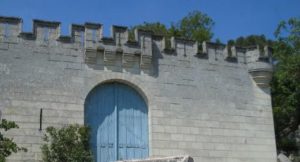













 Scotland
Scotland

